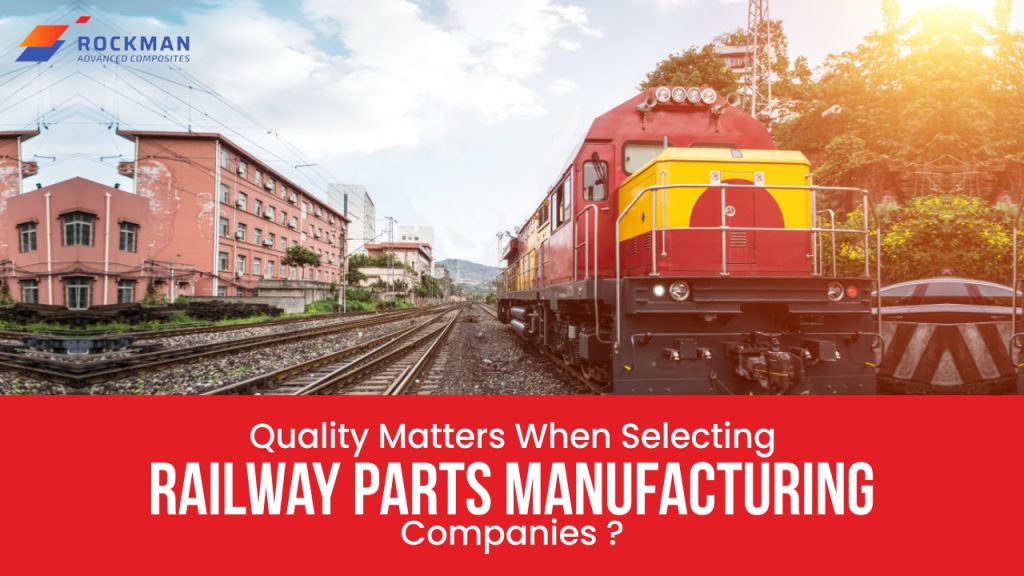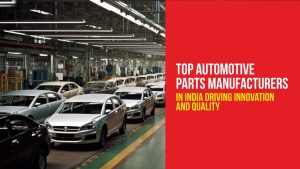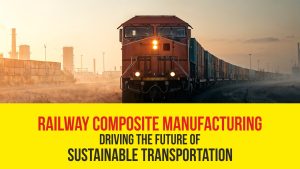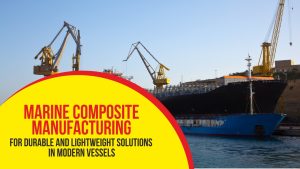If you look closely at a train, you might see sleek carriages, polished tracks, or the hum of an electric motor. But hidden beneath all that are thousands of components, some no bigger than your palm, that hold everything together. These parts don’t get much attention until something goes wrong.
And when they fail, the consequences can be enormous.
That’s why, in rail transport, quality isn’t a marketing slogan. It’s the difference between smooth, safe journeys and costly breakdowns, or worse. Choosing the right railway parts manufacturing companies is one of the most important decisions any rail operator, supplier, or maintenance team will ever make.
Let’s look at why that’s true and how you can spot a manufacturer who genuinely understands the stakes.
Rail Is Different
Think about the conditions a rail part endures over its life. Even parts that look simple, like brackets or bushings, have to be machined and inspected to tight tolerances. If they aren’t, problems creep in over time. Bolts loosen. Bearings wear faster. Cracks form where they shouldn’t. It faces:
- Constant vibration and shock every time the wheels hit a gap in the rails.
- Moisture, heat, and sometimes corrosive dust or chemicals.
- Loads that stretch materials close to their limits for years.
- Cycles of heating and cooling occur as weather and seasons change.
This is why so many experienced engineers and fleet managers insist on working only with proven railway parts manufacturing companies. They’ve learned, often the hard way, that the upfront price of a component is never the whole story.
The Hidden Price of Low-Quality Components
If you’re in charge of budgets, it can be tempting to go with the lowest bid. After all, on paper, cheaper parts look like a win. But what’s the real cost when something fails early?
Here’s what typically happens:
- A train is taken out of service, sometimes without warning.
- Maintenance crews scramble to diagnose and fix the issue.
- Replacement parts are rushed in at premium prices.
- Schedules get delayed, and customers or freight partners complain.
- Regulators might start asking questions if safety is at risk.
- Your insurance premiums could climb.
Multiply that scenario across a fleet, and you quickly see why quality is an investment. A component that costs a little more but lasts longer, performs better, and doesn’t trigger emergencies is worth every extra dollar.
Certifications: More Than Paperwork
One of the first things to look for is a manufacturer’s certifications. ISO 9001 is a baseline; it shows the company follows a quality management system. But in rail, you often need more specialized credentials. IRIS (the International Railway Industry Standard) is one of the most respected.
It’s worth asking every supplier to share their certifications. Trustworthy railway parts manufacturing companies keep them current and can explain what each one covers. If you get evasive answers or outdated documents, think twice.
Materials
Even the best design can fail if the materials aren’t right.
Ask any experienced rail engineer, and they’ll tell you that material sourcing makes or breaks performance. If a supplier swaps in lower-grade alloys or untested polymers to cut costs, you won’t know until parts are installed, and by then, the damage could be done.
Reliable manufacturers will:
- Source materials only from vetted suppliers.
- Test each batch for composition and strength.
- Keep certificates proving what went into every production run.
When you’re evaluating partners, ask to see these records. The best companies treat them as standard practice, not special requests.
Process Control
A good process isn’t just about fancy machinery. It’s about discipline. The most dependable railway parts manufacturing companies follow clear, documented steps for every order. They know exactly:
- Where do materials come from?
- How were they stored and handled?
- Which machines were used?
- What inspections happened at each stage?
It’s this attention to detail that keeps bad parts from reaching you. If a supplier can’t walk you through their process or show examples of inspection reports, that’s a red flag.
Skilled People Make All the Difference
Machines help, but it’s people who spot tiny defects that automated systems might miss. During a factory visit, or even a video tour, pay attention to the team.
How long have technicians worked there? Do they look rushed or overwhelmed? Is there evidence of ongoing training?
High turnover often signals deeper issues with culture or management. By contrast, manufacturers with experienced teams tend to deliver more consistent results.
Testing
Any company can claim their parts meet spec. Testing is how they prove it. Look for suppliers who:
- Perform dimensional checks with calibrated instruments.
- Use ultrasonic or magnetic particle inspection for hidden flaws.
- Run fatigue and load tests to simulate years of service.
Some companies will even invite you to watch testing in person. That level of transparency usually means they have nothing to hide, and a lot to be proud of.
Traceability Protects You
Imagine you discover an issue six months after installation. Without traceability, you can’t know which other parts might be affected. The best railway parts manufacturing companies track every component:
- From raw materials to finished goods
- Through every production stage
- To your delivery dock
That data lets you act fast if something goes wrong. It also demonstrates to regulators that you’ve taken all reasonable precautions.
Custom Parts
Sometimes you need components designed for specific loads, clearances, or conditions. This is where a manufacturer’s engineering team becomes essential. Strong suppliers won’t just take your drawing and run with it. They’ll:
- Review it carefully for manufacturer ability.
- Suggest design tweaks to improve performance.
- Produce prototypes so you can verify fit and function.
This partnership approach helps avoid surprises later and often saves money in the long run.
Final Thoughts
In rail transport, the stakes are high. The quality of parts isn’t optional; it’s the backbone of everything you do. That’s why working with experienced railway parts manufacturing companies is so important. When you choose carefully, you protect your teams, your passengers, and your reputation. You also build relationships that can support you as your needs grow and change. So take your time. Ask hard questions. Visit facilities. And remember that every extra hour you spend evaluating suppliers is time invested in safety and peace of mind.








